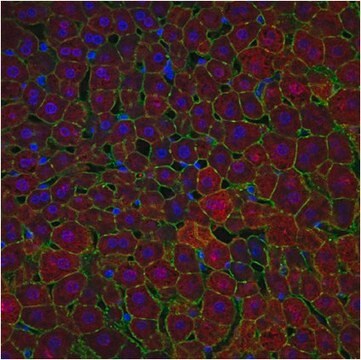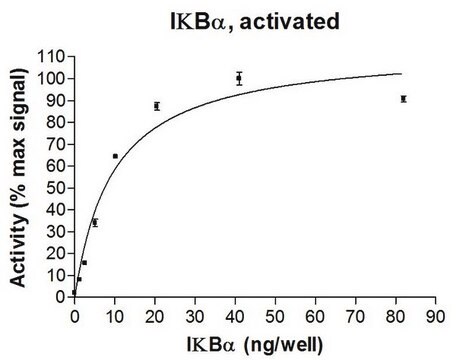380R-2
Arginase-1 (EP261) Rabbit Monoclonal Primary Antibody
About This Item
Produtos recomendados
fonte biológica
rabbit
Nível de qualidade
100
500
conjugado
unconjugated
forma do anticorpo
culture supernatant
tipo de produto de anticorpo
primary antibodies
clone
EP261, monoclonal
descrição
For In Vitro Diagnostic Use in Select Regions
Formulário
buffered aqueous solution
reatividade de espécies
human
embalagem
vial of 0.1 mL concentrate (380R-24)
vial of 0.1 mL concentrate Research Use Only (380R-24-RUO)
vial of 0.5 mL concentrate (380R-25)
vial of 1.0 mL concentrate (380R-26)
vial of 1.0 mL concentrate Research Use Only (380R-26-RUO)
vial of 1.0 mL pre-dilute Research Use Only (380R-27-RUO)
vial of 1.0 mL pre-dilute ready-to-use (380R-27)
vial of 7.0 mL pre-dilute ready-to-use (380R-28)
vial of 7.0 mL pre-dilute ready-to-use Research Use Only (380R-28-RUO)
fabricante/nome comercial
Cell Marque™
técnica(s)
immunohistochemistry (formalin-fixed, paraffin-embedded sections): 1:50-1:200 (concentrated)
Isotipo
IgG
controle
hepatocellular carcinoma, normal liver
Condições de expedição
wet ice
temperatura de armazenamento
2-8°C
visualização
cytoplasmic, nuclear
Informações sobre genes
human ... ARG1(383)
Descrição geral
Qualidade
 IVD |  IVD |  IVD |  RUO |
Ligação
forma física
Nota de preparo
Note: This requires a keycode which can be found on your packaging or product label.
Download the latest released IFU
Note: This IFU may not apply to your specific product lot.
Outras notas
Informações legais
Não está encontrando o produto certo?
Experimente o nosso Ferramenta de seleção de produtos.
Código de classe de armazenamento
12 - Non Combustible Liquids
Classe de risco de água (WGK)
WGK 2
Ponto de fulgor (°F)
Not applicable
Ponto de fulgor (°C)
Not applicable
Escolha uma das versões mais recentes:
Certificados de análise (COA)
Lamentamos, não temos COA para este produto disponíveis online no momento.
Se precisar de ajuda, entre em contato Atendimento ao cliente
Já possui este produto?
Encontre a documentação dos produtos que você adquiriu recentemente na biblioteca de documentos.
Nossa equipe de cientistas tem experiência em todas as áreas de pesquisa, incluindo Life Sciences, ciência de materiais, síntese química, cromatografia, química analítica e muitas outras.
Entre em contato com a assistência técnica




